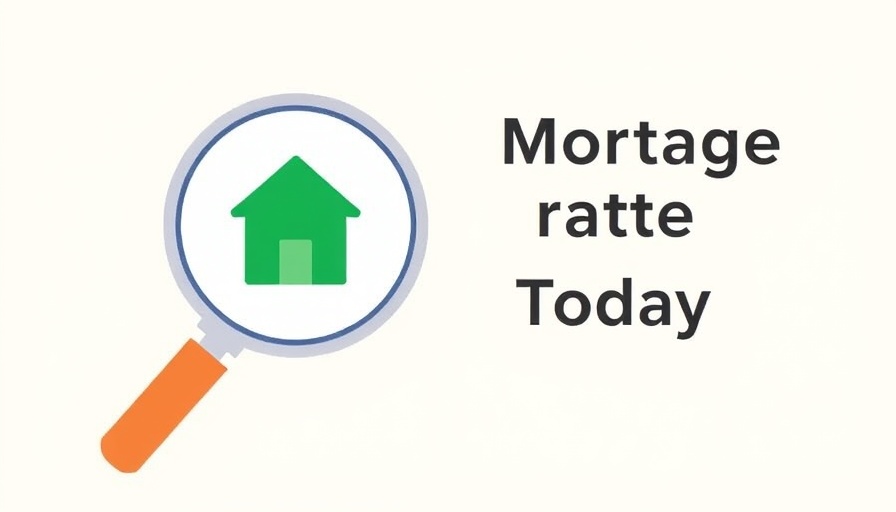
Understanding Mortgage Rates: Today's Trends and Implications
As of September 15, 2025, mortgage interest rates continue to reflect a downward trend observed throughout the month. For small business owners and managers keen on understanding how these changes might influence their financial decisions, the current average interest rate on a 30-year, fixed-rate mortgage is 6.48% APR. This minor decline of two basis points from the previous day signals an opportunity for potential savings, especially for those considering purchasing property or refinancing existing loans.
What Drives Mortgage Rate Changes?
The fluctuations in mortgage rates arise from various economic indicators and market conditions. Factors such as inflation rates, employment data, and the Federal Reserve's decisions regarding interest rates can heavily influence mortgage rates. As lenders adjust their rates in response to these economic signals, small business owners must stay informed to make strategic decisions about buying or refinancing property, which can impact their cash flow and operational costs significantly.
Making Informed Decisions: Benefits of Lower Rates
The drop in mortgage rates can create several advantageous opportunities for business owners. Lower rates generally mean lower monthly payments, which can free up capital for investments in operational growth or expansion. For example, a small brewery eyeing a new location might find that the cost of financing renovations or expansions is less daunting during times of lower interest rates. Seizing these moments can be crucial for thriving in a competitive market.
Comparing Current Rates to Historical Trends
Contextualizing today's rates involves looking at historical data. For instance, during 2024, rates hovered around 7% to 7.5% for similar loans. The 6.48% rate thus reflects a desirable change, and it's imperative for business managers to evaluate how such trends can affect their investment strategies. Lower rates also hint at increasing competition among lenders, providing opportunities for negotiating better terms.
Future Predictions: Are Rates Expected to Stay Low?
Econ omists project that mortgage rates may continue to decrease, driven by factors such as a potential economic slowdown and changes in inflationary pressures. Business owners should keep a close eye on economic indicators and Federal Reserve announcements since these factors can alter market expectations. By anticipating changes in rates, savvy managers can time their borrowing decisions effectively to maximize financial benefits.
Strategies for Navigating Mortgage Decisions
Given the potential for fluctuation in mortgage rates, small business owners can adopt several key strategies:
- Lock In Rates: If you find a favorable rate, consider locking it in to safeguard against potential increases.
- Consult with Financial Advisors: Professional insights can help you navigate the complexities of mortgage lending.
- Evaluate Your Business Needs: Determine how property investments align with your broader business strategy.
Taking Action: How to Leverage These Insights
In this evolving rate environment, business leaders should regularly assess their financing options. By staying updated with the latest rates and trends, small business owners can make informed decisions that capitalize on favorable conditions. Whether considering a purchase, refinancing, or assessing current debt, the opportunities presented by lower mortgage rates can contribute significantly to financial growth.
As we navigate these financial landscapes, networking with other business owners and financial experts can provide additional insights. Join forums, attend workshops, or engage in discussions to share experiences and strategies. Remember, informed decisions lead to empowered businesses!
For more personalized insights and strategies on leveraging running your business effectively in these market conditions, consider engaging with financial professionals.
 Add Row
Add Row  Add
Add 




Write A Comment